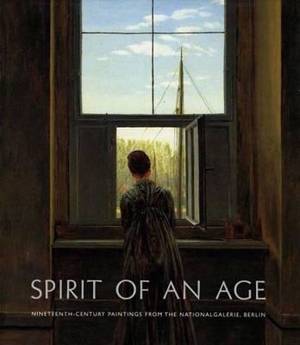
Door een staking bij bpost kan je online bestelling op dit moment iets langer onderweg zijn dan voorzien. Dringend iets nodig? Onze winkels ontvangen jou met open armen!
- Afhalen na 1 uur in een winkel met voorraad
- Gratis thuislevering in België vanaf € 30
- Ruim aanbod met 7 miljoen producten
Door een staking bij bpost kan je online bestelling op dit moment iets langer onderweg zijn dan voorzien. Dringend iets nodig? Onze winkels ontvangen jou met open armen!
- Afhalen na 1 uur in een winkel met voorraad
- Gratis thuislevering in België vanaf € 30
- Ruim aanbod met 7 miljoen producten
Zoeken
€ 48,95
+ 97 punten
Omschrijving
This magnificent book traces the development of nineteenth-century German paintings through the story of a remarkable institution--the Nationalgalerie in Berlin, one of Germany's most important collections. In their substantial general essays, Françoise Forster-Hahn surveys the social and political background to art and culture in Berlin in the nineteenth century; Claude Keisch and Angelika Wesenberg discuss the reception of German painting in Germany itself; and Peter-Klaus Schuster provides a historical overview of the Nationalgalerie. The authors focus on some seventy paintings, from the sublime canvases of Caspar David Friedrich and other Romantic painters early in the nineteenth century to scenes of industrial Berlin and the brilliantly observed works of the naturalists of the 1840s and 1850s, ending with the Impressionist and Post-Impressionist innovations of French and German artists that so startled Berlin around 1900, when the Nationalgalerie acquired them against the wishes of the highly conservative and anti-French Kaiser. Richly detailed cityscapes by Eduard Gaertner and Johann Erdmann Hummel provide wonderful views of mid-century Berlin, and powerful works by Max Beckmann and Lovis Corinth announce the Expressionism of later decades of the twentieth century. Claude Keisch is Senior Curator at the Nationalgalerie, Berlin. Peter-Klaus Schuster is Director General at the Staatliche Museen zu Berlin. Françoise Forster-Hahn is professor of the history of art, University of California. Angelika Wesenberg is Curator at the Nationalgalerie, Berlin. Published by National Gallery Company Distributed by Yale University Press This book is published to accompany an exhibition at the National Gallery in London and at the National Gallery of Art in Washington, D.C.
Published by National Gallery Company Distributed by Yale University Press
Published by National Gallery Company Distributed by Yale University Press
Specificaties
Betrokkenen
- Auteur(s):
- Uitgeverij:
Inhoud
- Aantal bladzijden:
- 192
- Taal:
- Engels
- Reeks:
Eigenschappen
- Productcode (EAN):
- 9780300090185
- Verschijningsdatum:
- 11/05/2001
- Uitvoering:
- Hardcover
- Formaat:
- Genaaid
- Afmetingen:
- 254 mm x 290 mm
- Gewicht:
- 1260 g

Alleen bij Standaard Boekhandel
+ 97 punten op je klantenkaart van Standaard Boekhandel
Beoordelingen
We publiceren alleen reviews die voldoen aan de voorwaarden voor reviews. Bekijk onze voorwaarden voor reviews.











